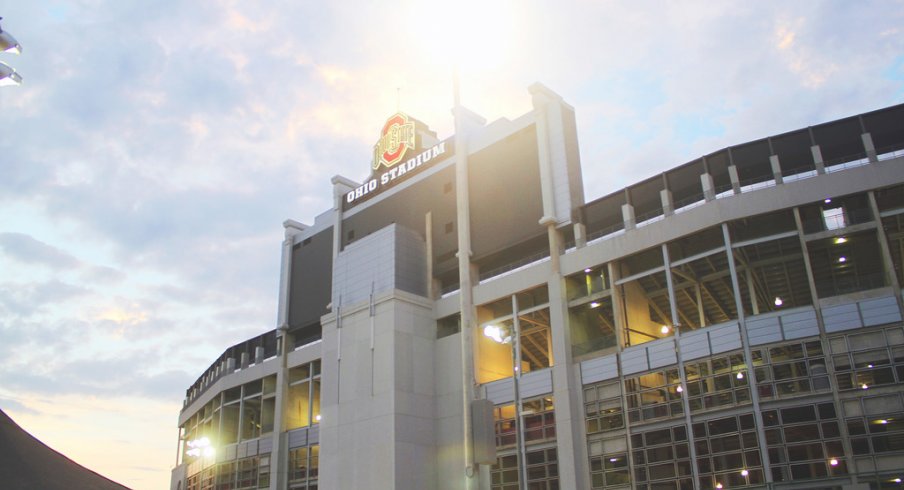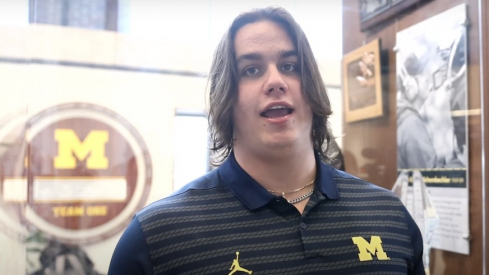A special edition of Campus Connection takes a look at one of the most historic buildings on campus ahead of the showdown with Penn State.
With Ohio State set to take on No. 2 Penn State this weekend in Columbus, there is no better time to take a look at the venue in which the game will be played: Ohio Stadium.
Construction on the historic stomping grounds began in 1921, after the previous stadium — Ohio Field — proved to be too small to contain the large, raucous crowd that seemed to grow every week.
After raising over $1.1 million dollars, the university decided to go ahead and begin breaking ground on the new stadium. After just a few months, the stadium was completed and hosted the Oct. 7, 1922 contest against Ohio Wesleyan, a game which the Buckeyes won by a whopping score of 5-0.
Initially, university officials feared for the well-being of the new stadium, as they were unconvinced they would be able to fill up all 66,210 seats. These concerns were put to rest, however, when Ohio State took on Michigan two weeks later. At that game, the crowd was announced as just over 70,000, although nobody is sure exactly how many people were in attendance.
Four years later, when the Buckeyes took on Michigan again in 1926, over 90,000 spectators poured in to watch Ohio State battle the Wolverines, a game which the Buckeyes dropped by one point, blemishing an otherwise perfect season. This was the last time standing-room only tickets were sold for a game.
Another sellout during the early years included the 1935 "Game of the Century" battle with Notre Dame, a game in which the Buckeyes led for the duration until the final play, when Notre Dame quarterback Bill Shakespeare threw a heave to wide receiver Wayne Milner.
"In the end they threw a touchdown pass to beat us. That pass went from Shakespeare to Milner and the saying went that 'A Protestant threw a pass to a Jewish boy to lead the Irish over the Buckeyes,'" team captain Charlie Ream said in the book Then Tress Said to Troy.
The loss once again cost the Buckeyes an undefeated campaign.
Despite most games only attracting 20,000-30,000 spectators during the 1920's and 1930's due to the Great Depression among other factors, the games against Michigan regularly sold out, including a 34-0 win in 1934, and a 21-0 win in 1936.
During Ohio State's national championship campaign of 1942 under head coach Paul Brown, the stadium regularly hosted over 40,000 fans, with 72,000 in attendance to watch the Buckeyes defeat No. 4 Michigan, 21-7.
Another memorable moment came 43 years later in 1985, when the Buckeyes took on Iowa at Ohio Stadium. The crowd noise was so deafening that legendary Iowa coach Hayden Fry suggested placing sound meters inside stadium and penalizing teams when the noise exceeded a certain level.
"The crowd attending these home games is known for creating harsh and difficult environments for opponents," Fry said. "It's a realistic fact that happened. [Quarterback Chuck Long] became mentally disturbed for the first time since he's been a starter for us because of his inability to communicate."
Iowa came into that game ranked No. 1 in the country, but fell to the Buckeyes, 22-13.
As more time passed, many renovations were made to the stadium. In 1971, the natural grass field was removed, replaced by AstroTurf. Eight years later, the AstroTurf was removed in favor of SuperTurf. However, in 1990, natural grass made its return before it was forced out after several re-sodding issues during the 2006 season.
Similar adjustments were made to the "fan experience" aspect of the stadium. The track that had circled the field since 1931 was removed in 1998, and the field was lowered 14.5 feet with the installation of a slurry wall. Between 1998-2001, the press box was replaced and 81 luxury suites were built. Additionally, a smaller scoreboard was installed in the north end zone and the south end zone scoreboard was increased in size to the 90-by-30 monster that stood for ten years until the 124-by-42 behemoth that is still in place was built for the 2012 season.
Prior to the 2014 season, 2,500 seats were added to the south stadium stands, and raised the capacity of the stadium to its current 104,944. The stadium is now the third-largest in the country and fifth-largest in the world.
One final improvement came in 2014, when permanent lights were installed above the press box and in the northeast and southeast corners of the stadium, allowing Ohio State to play night games without having special portable/non-permanent lights. The first time these lights were used was in Week 2 of the 2014 season, which of course ended with a loss to Virginia Tech.
The largest crowd in Ohio Stadium history was for the Michigan game last season, where Curtis Samuel and the Buckeyes defeated the Wolverines in double overtime in front of 110,045 fans.
Finally, we reach 2017. After 109,088 fans packed in to see the Buckeyes fall in a top-five matchup to Oklahoma, a similar crowd is expected this weekend to watch the local team do battle with yet another top-five opponent, No. 2 Penn State. The atmosphere should be electric for another instant classic inside Ohio Stadium.
If you have a club, activity, or group that would like to be profiled for Campus Connection, send an email to david@elevenwarriors.com.


